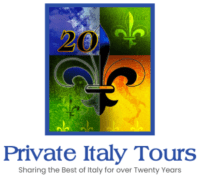A universal truth holds that tourists who first come to Italy, and sometimes those who repeat visits to the country, think only of Venice when they consider a visit to the province of Veneto. However, visitors can find other beautiful and far less crowded cities throughout Veneto. Vicenza is “The Jewel” of the province.
Some background: The Romans established a colony on the shores of what is now called the Bacchiglione River sometime between the 2nd and 3rd centuries BC. The invasion and occupation of Goths in the 9th Century AD impacted the settlement. Then came the annexation by political powers including those of Emperor Sigismund of Luxembourg and the Holy Roman Emperor, Maximilian I. In 1516, the city permanently came under the rule of Venice.
Exploring this extraordinary city provides a lesson in architectural history, forward thinking cultural leadership, and the arts. The city’s fame grew exponentially by the presence of one Andrea Palladio, an architect of extraordinary talent. Palladio designed the majority of country villas in and near the city. His gorgeous residences dot the Veneto province. His vision of balance coupled with a perspective that hearkens to classic antiquity inhabits all the villa styles this incredibly talented architect conceived. The wealthiest families from Venice were his patrons, and the results of their commissions are evident.
The Villa Valmarana ai Nani provides one example. A lovely garden frames the approach of the long and curving driveway. From one side of the garden, you view the Valley of Silence (Valle del Silenzio) and from the other, a line of large cypress trees. The restored interior frescoes, created by the Tiepolo family, date to the time of the villa’s construction. Located only ten minutes from the city center by taxi, this gorgeous property is a must see.
The most famous of the Palladio-designed city structures is the so-called “Basilica Palladiana,” located in the heart of the city on the Piazza dei Signori. The Council of Forty in Venice gave the commission of the unification of two prior existing Gothic structures to the young Palladio in 1549. He solved this by encasing the two existing buildings under one roof. The results offer a delight to the eye; balance, perspective, architraves, and a sense of light spaciousness greet the visitor in every view of the structure. The two columns which frame the entrance to the piazza in front of the Basilica, one surmounted by the Lion of Venice, the other by San Marco, serve as unmistakable reminders of the power and prestige of Venice to both the architect and to visitors today.
Don’t let the austere facade of the Teatro Olimpico mislead you. Palladio designed this structure as well. The Academia is famous for many reasons, not the least of which is Palladio’s clever design for staging plays. This YouTube video, Empire of the Eye: The Magic of Illusion – Teatro Olimpico – Andrea Palladio shares some of the secrets Palladio designed into this gorgeous theater. The Olympic Academy commissioned the structure. This forward thinking group of founders insisted on the inclusion of women in the leadership of the academy, and that fundamental directive exists to this day.
Finally, of the many villas designed by Palladio, one stands apart: Villa Capra, known as La Rotonda. Located on a hill above the city and on the opposite side of the river from the Piazza dei Signori, this gorgeous villa absolutely exudes classical elegance. The four walls of the structure and the domed inner rotonda belie a special feature of the building. Palladio designed the building so prevailing winds would always bring refreshing breezes into the very core of the villa. Palladio died in 1580, before completion of the villa, and Vincenzo Scamozzi took over the commision to complete the structure. He only deviated from Palladio’s drawings by replacing a originally intended high dome with a Roman Pantheon-inspired coppola, including an oculus which has never been used.
One last interesting item regarding literature few people know about the city: Luigi da Porto (1485-1529), wrote a novel based upon the events of his life, Historia novellamente ritrovata di due nobili amanti; in English, Newly Found Story of Two Noble Lovers. This story is said to have been the basis upon which one William Shakespeare wrote the play Romeo and Julie. The characters of Romeo, Juliet, Friar Lawrence, Tybalt, and others, nearly exactly parallel those found in Shakespeare’s play.
Such surprises abound across Italy.
When I visit this beautiful city, I stay at the Relais Corona, located around the corner from the Santuario di Santa Corona. This lovely, small, beautifully designed Residenza offers spacious rooms with modern bathrooms. While this is not a five-star accommodation, its location and comfort can hardly be beat.
After a visit to the Teatro Olimpico, I always stop for some Tremezzini, delicious, small sandwiches prepared by the staff at the Caffe’ Olimpico Da Ciro E Rosa, located just outside the courtyard of the Teatro at Via Leva’ Degli Angeli 5. The food is very good, fairly priced, and the service efficient. For dinner, I have a preference for the Sicilian inspired cuisine of Il Molo, located in the heart of the city: Contra Pedemuro San Biagio 48. It may seem strange to prefer a restaurant with Siclian cuisine in northern Italy, yet this is a place you will enjoy and, hopefully, return to. They offer recipes as authentic as you will find in any small restaurant or trattoria across Sicily. The atmosphere reflects the Sicilian roots of the owners and chef. Well worth it!
When you travel, again to Italy, as surely you will, please include a few days to explore the beauty of Vicenza, “The Jewel of the Veneto”.






